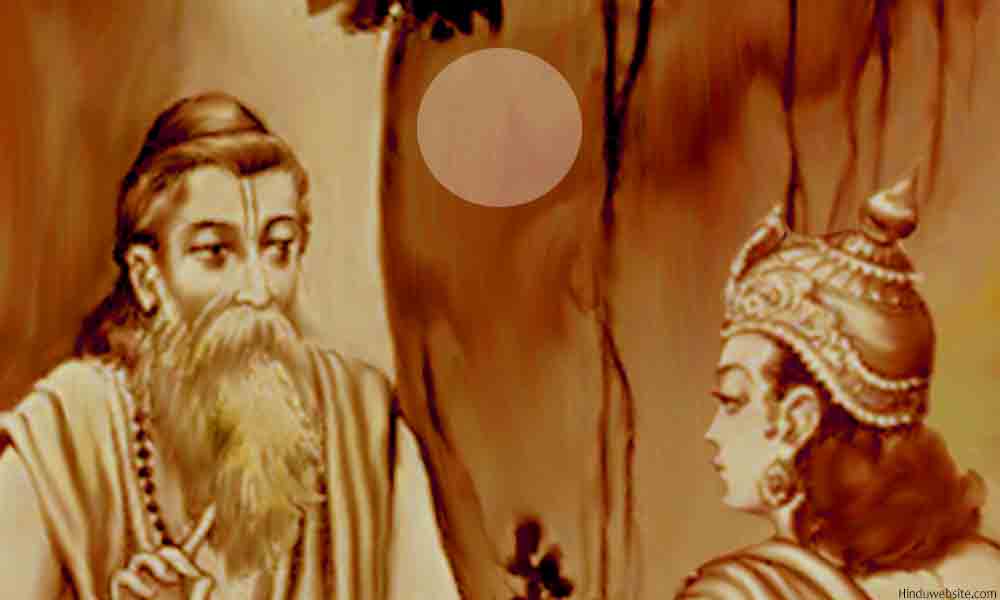
Ashtavakra Samhita, Chapter 8, Verse 04

Index, Verse Index, Verse 1, Verse 2, Verse 3, Verse 4,
Verse 04
yadaa naaham tadaa moksho
yadaaham bandhanam tadaa
matveti helayaa kinchinmaa
grihaana vimuncha maa
Translation
When there is no aham (egosense), then it is liberation, but when there is aham, then it is bondage. Thinking thus, without any difficulty you shall neither accept nor rejecting anything.
Meaning
Transcending the Ego
Aham means the self-sense or the I-am-ness, but philosophically it means the ego, which is responsible for the feeling of limitedness, smallness or atomicity (anavatvam). Aham leads to ahamkar or egotism, which manifests in us pride, arrogance, haughtiness, self-love or the feeling of superiority and rivalry. Aham is used in Sanskrit to denote both the ego and the self.
Hence, our scriptures identify two types of ego. One is the universal ego which pervades and encompasses everything and identifies with everything as itself, perceiving no duality or otherness even when it exists in the beings amidst diversity and duality. It is pure and untouched by the impurities of the world, and always exists as itself, by itself and in itself. It is independent, indestructible, eternal, infinite, nondual, self-knowing, blemishless, omniscient and omnipresent. It is also known as the universal self or Brahman. In a very broad sense, it is the all-pervading ego or self-sense of all. Hence, the Upanishads extol it as the highest, absolute reality and refer to it as the self (aham atma) and as Brahman (aham brahmasmi).
The other ego is the limited one, which identifies itself as a limited entity, with a specific name and form and individuality, and perceives itself as separate and distinct from others and the rest of creation. Since it perceives everything in relation to itself, it is subject to duality, distinction and limitation. Unlike the universal self, it is an aspect or modality (tattva) of Nature and an instrument of maya. Hence, it is one of the chief causes of ignorance, delusion and bondage, besides ahamkara or egotism.
In normal circumstances, the ego remains in control of the mind and body. Because of that, you identify yourself with your name and form and consider yourself a limited being. As an instrument of maya, it veils your true nature and promotes in you a false identity or individuality, which draws you into worldliness, selfishness, desire-ridden actions, ownership, relationships, attachments, and so on. In liberation, your limited ego is completely dissolved as it merges into the universal ego, leaving no trace of its own.
The same happens temporarily when you enter the transcendental state of self-absorption or turya and attains oneness or nonduality. Because of the ego, you experience duality and separation. When it is dissolved, you merge into your pure-self, without a second. In the pure consciousness of the self, there is neither the sense of ego nor the feeling of separation and otherness. In that state one neither accepts nor rejects because when you are all and see yourself in everything, there is nothing which can accept or reject.
For a liberated yogi, everything exists in him as himself without duality. He perceives the world as his own creation or an extension or projection of himself, in which he plays different roles for his own enjoyment. He is the subject and object, the giver and the receiver, the devotee and the object of his devotion, and the sacrificer and the sacrificed. On the path of liberation, the ego is the last major hurdle which one has to overcome. Since, it is chiefly responsible for our self-preservation instinct, we cannot easily overcome it, without negating ourselves and giving up everything which promotes it or strengthens it.
The ego is responsible for our lower nature, since it takes control of our thinking and actions and promotes self-interest through attachments and desire-ridden actions. For that reason only we experience feelings, emotions, mental modifications, limitations, relationships, dependence, expectations, and so on. Your numerous identities arise from it only, as you extend yourself into the world and identify yourself with your family, community, religion, profession, social and economic class, caste, nationality, gender, group, etc. They make your liberation even more difficult.
To be free, you have to give up all the identities which you acquire in your life through your actions, relationships and associations. You have to give up the very desire to assert or defend your name and identity and Become absorbed in oneness or nonduality, transcending your limited ego and impure consciousness through austere effort.
Suggestions for Further Reading
- Om, Aum, Pranava or Nada in Mantra and Yoga Traditions
- How To Choose Your Spiritual Guru?
- Do You Have Any Plans For Your Rebirth or Reincarnation?
- Understanding Death and Impermanence
- Lessons from the Dance of Kali, the Mother Nature
- Letting your God live in You - The True Essence of the Hindu Way of Life
- prajnanam brahma - Brahman is Intelligence
- The Construction of Hinduism
- The Meaning and Significance of Heart in Hinduism
- The Origin and Significance of the Epic Mahabharata
- The True Meaning of Prakriti in Hinduism
- Three Myths about Hinduism
- What is Your Notion of God?
- Essays On Dharma
- Esoteric Mystic Hinduism
- Introduction to Hinduism
- Hindu Way of Life
- Essays On Karma
- Hindu Rites and Rituals
- The Origin of The Sanskrit Language
- Symbolism in Hinduism
- Essays on The Upanishads
- Concepts of Hinduism
- Essays on Atman
- Hindu Festivals
- Spiritual Practice
- Right Living
- Yoga of Sorrow
- Happiness
- Mental Health
- Concepts of Buddhism
- General Essays